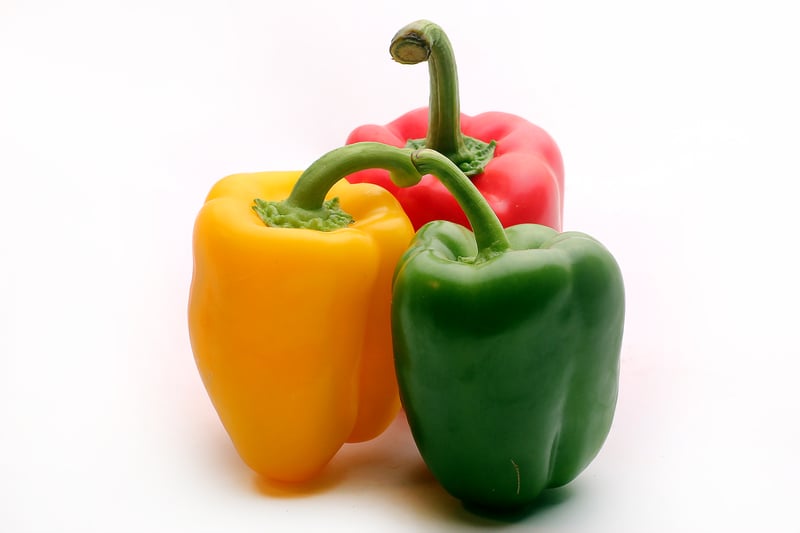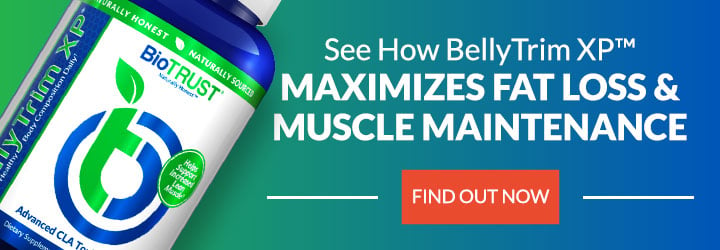Good Carbs vs Bad Carbs – Are You Making the Right Choices?

Regardless of which diet camp you belong to—Keto, Paleo, Mediterranean, vegetarian, or otherwise—you have probably seen some contradictory, if not downright confusing, information when it comes to carbohydrates. It’s kind of amazing how controversial carbs have become.
While some suggest getting 50% or more of your calories from carbs, others are vehement that carbs cause weight gain, diabetes, and heart disease, and as a result, we should limit them if not altogether avoid them like the plague. For example, more moderate low-carb diets advise keeping carbs under 30% while the ketogenic diet limits carbs to just 5% of calories.
While there’s little question that decreasing carbs can be a highly effective strategy for weight loss and improved health markers (like cholesterol, triglycerides, blood sugar, and blood pressure), let’s skip over the “best” diet debate as there is no one-size-fits-all solution. Some people do better with more carbs, and some do better with less. And you’ll need to determine how your body responds to varying carb intakes.
However, there is no debate that some carbs are better (often much better) than others. Which are good carbs vs bad carbs? Are you making the right choices?
So, What are Carbs?
Carbohydrates are one of the three macronutrients (i.e., carbs, protein, and fats), and they can be found in foods as sugars, starches, and fiber. When we consume starches or sugars, they are broken down into their simplest components, usually glucose, one of the body’s main sources of energy. Those that aren’t used right away can be stored as glycogen (the body’s storage form of carbohydrate, which can be found in the liver and skeletal muscle) or fat to use when food is less available.
Fiber, on the other hand, travels through the upper GI tract undigested. Although we tend to talk about fiber as single category, there are multiple different classifications, which transcend even the traditional view of soluble versus insoluble fibers. For example, some fibers are fermentable (i.e., prebiotic fibers), which means that they serve as a food source for the friendly bacteria that reside in the lower GI tract. The bacteria then use the fiber to create fatty acids for our cells to use.
Simple Carbs vs Complex Carbs
Carbs are often divided into two categories: simple and complex. This distinction is based on the length of carbohydrate chains, which is thought to be related to how quickly the body can break down the carbohydrates into simple sugars (e.g., glucose) for fuel. Generally speaking, starches (e.g., whole grains, potatoes) are considered “complex” carbs while “white” carbs (e.g., bread), kiddie cereals, sodas, pastries, candies, cookies, etc., are considered “simple” carbs.
Another, perhaps better, way to categorize carbs is as whole or refined. And for the most part, the almost always reflect good carbs vs bad carbs.
Whole, minimally processed carbs provide a larger spectrum of nutrients, including fiber. This includes vegetables, fruits, beans, root vegetables, and whole grains.
On the other hand, refined carbs typically have had the fiber removed, so again, they are digested and broken down into simple sugars more quickly. Foods like fruit juices, white carbs (breads, rice, crackers, desserts, pasta, etc.), and sodas and sweet teas fit into this category.
Good Carbs vs Bad Carbs
Folks who consume more refined, processed carbs are more likely to have health issues, such as weight gain, obesity, type 2 diabetes, cardiovascular disease, cognitive decline, and more. While there are multiple potential explanations, one reason is that regular consumption of simple carbs leads to more pronounced swings in blood sugar (i.e., greater glycemic variability). In other words, they tend to quickly spike blood sugar levels followed by rapid, pronounced blood sugar crashes, which can lead to, among other things, cravings, hunger, and reduced insulin sensitivity.
Worse, these types of carbs often have their nutrients removed, so they’re just empty calories. And to improve taste, ultra-processed products also usually have added sugars, poor-quality oils, and sodium, making them even more palatable, which leads to overeating (garbage calories).
In the battle of good carbs vs bad carbs, it’s easy to see why the entire category has been demonized.
The “bad” carbs to avoid include:
- Liquid sugar: This, of course, includes sodas as well as sweet teas, flavored waters, energy drinks, and fruit juices.
- White carbs: Made with refined grains that have been stripped of fiber and nutrients, this includes most breads, pastas, cookies, crackers, cakes, etc., that you see on supermarket shelves.
- Candies and breath fresheners: These sugar-sweetened treats typically provide no nutrition, just empty calories.
- Processed potatoes: Once deep-fried in refined vegetable oils, potatoes are transformed from healthy to not even close.
- Desserts: Usually made with refined flour and sugar, standard desserts are perfect for an energy surge and an even bigger crash. You can avoid these empty calories by making your own sweet treats. Here are a few to test your taste buds on.
Fortunately, nature offers carbohydrates that are packaged not only to provide longer-lasting energy but a big dose of nutrition and fiber to boot. Whole-food carbohydrates like vegetables, fruits, beans, and yes, whole grains, are great sources of nutrients and fiber, which helps prevent those sugar spikes and crashes. In fact, these plant foods are linked to a lower risk of disease along with improved metabolic health.
While cutting carbs can help some people lose weight, that doesn’t mean that consuming carbs causes the weight gain. And often, weight loss is less about cutting carbs than replacing unhealthy, processed, refined carbs with healthy, fiber-rich, whole-food sources. In other words, when it comes to carbs, quality counts.
So, whichever diet you find works best for you (i.e., the one you’ll follow and makes you feel amazing), what’s most important is ensuring you are eating real, whole, minimally processed FOOD—that typically doesn’t come in a box, bag, or carton.
So, What are the Good Carbs?
While there are essential fatty acids (found in fats) and essential amino acids (found in proteins), there are no essential carbohydrates. In other words, just like vitamins and minerals, there are certain fats and amino acids that your body needs yet cannot make on its own; therefore, you need to get them from food and/or supplements. Conversely, the same cannot be said for carbohydrates. In fact, you can live on an essentially no-carb diet, though it would likely be difficult.
However, that doesn’t mean carbohydrates can’t play an important role in good nutrition. Carb-containing foods are often carriers for other essential nutrients, including vitamins, minerals, phytonutrients, and antioxidants, making them tremendously good for you. Plus, carbohydrates serve as a preferred source of fuel, particularly for the brain and for muscles during higher-intensity activities.
Good carbs include:
- Vegetables: Eat a wide variety of these vibrant, colorful, nutrient-rich foods every single day.
- Whole fruits: Sweet and healthy, fruits provide an abundance of nutrition and flavor. If you’re following a lower-carb diet, look for lower-carb fruits like berries, watermelon, coconut, lemons, clementine oranges, kiwi, and plums.
- Beans and legumes: Not only a slow-digesting source of carbohydrates, beans and legumes are also loaded with fiber and amino acids.
- Whole grains: Skip the marketing on the front of the package and look for true whole grains like oats, quinoa, and brown rice. It’s worth noting that products that claim “whole grain” or “whole wheat” are often still highly refined or processed and behave very much like their “white” counterparts in the body.
- Root vegetables: From sweet potatoes to potatoes to carrots and parsnips, these are nutrient powerhouses that will fill you up and keep you feeling full, longer.
One good way to see how good the carb under consideration is is to look at how much fiber it provides as adults need at least 25 grams of fiber each day. And the vast majority of us don’t consume nearly enough fiber, which we get only from eating plant foods like the good carbs listed above.
Good Carbs vs Bad Carbs: A Recap
Again, some people feel and look better with fewer carbs. Others do better with more carbs. There is no single best diet for everyone. Your optimal carb intake will depend on your overall activity level (are you sedentary?), metabolic health, how intensely and regularly you exercise, age, gender, personal preferences, and food culture. But it is important to understand the difference between good carbs vs bad carbs.
Some people are clearly less tolerant when it comes carb intake, and they can benefit from decreasing carbs. Yet for many of us, there’s no need to fear all carbs. Rather it’s about choosing good carbs like whole, minimally processed foods, such as vegetables, fruits, beans, and whole grains and limiting or altogether avoiding those that are made with refined grains and/or added sugar. It’s a simple, though not always easy, solution.







